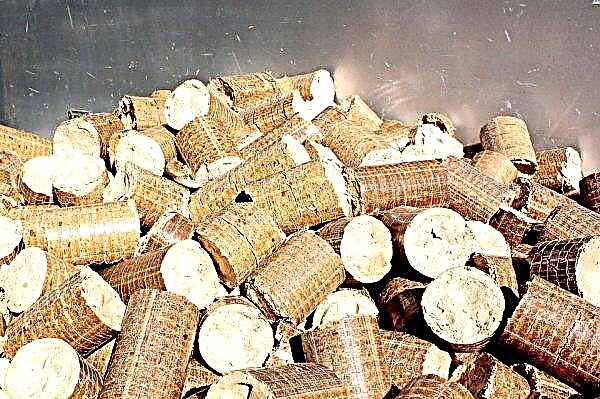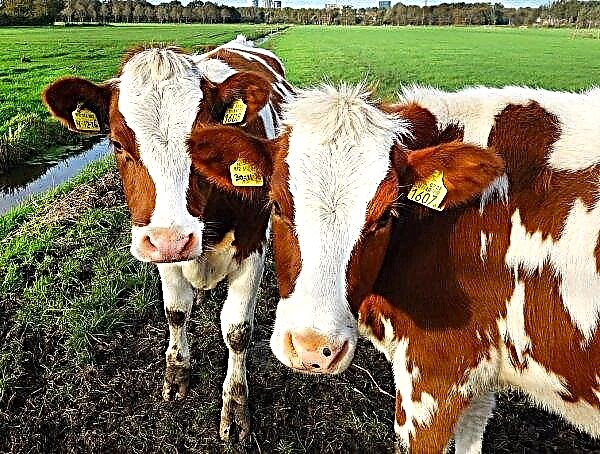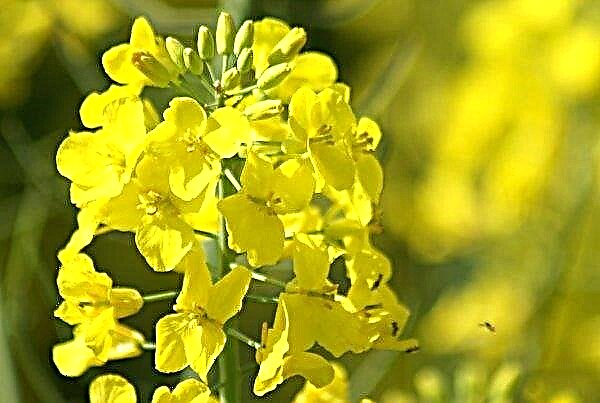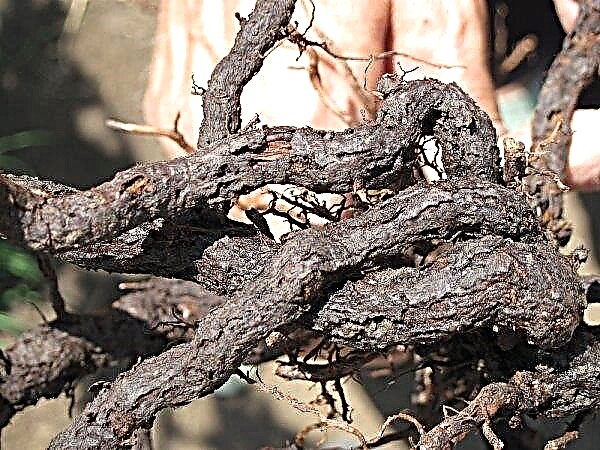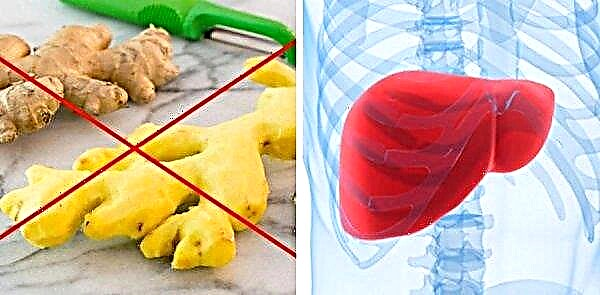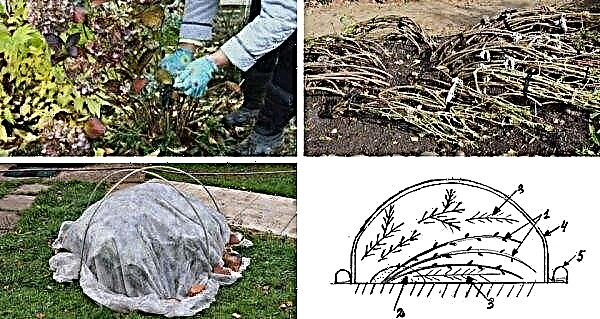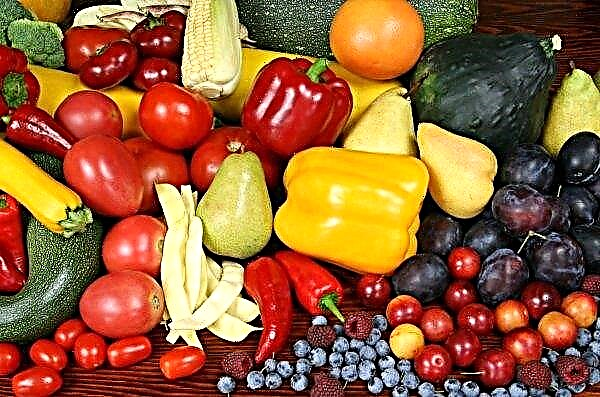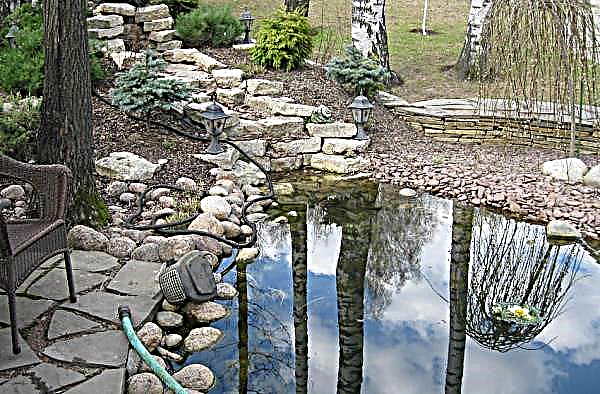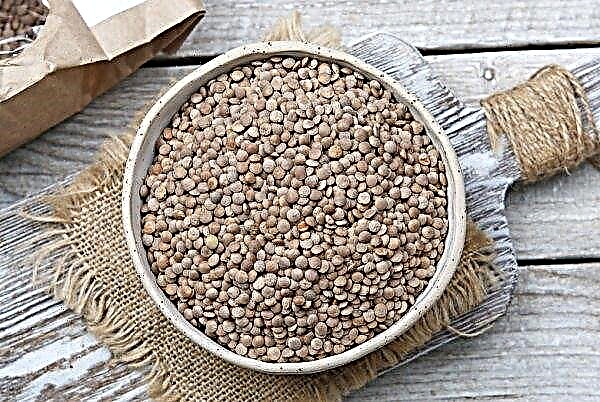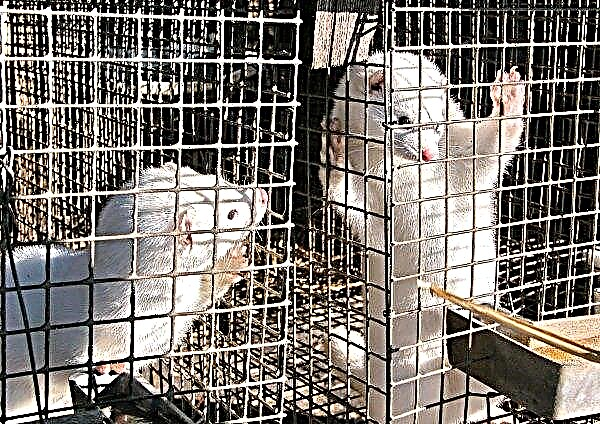The apple variety Robin (aka Malinka and Suislepskoe) belongs to the group of old varieties of summer ripening, but in addition it also has a considerable number of additional advantages. What exactly is worth knowing about the rules for growing such apple trees and what crop to count on when cultivating them - read on.
Characterization and description of the variety
The exact history of the origin of the Malinovka variety is unknown today, but most researchers agree on its distribution from the Baltic countries, on the territory of which these apple trees were discovered back in the 18th century (in 1845, one of the plants was found near the Suslep estate). Among other versions of possible origin are French roots and a connection with seedlings of the Persian apple tree.
Check out these summer apple varieties:
Today, Malinovka apple trees are widespread in various countries - the Baltic States, Ukraine, Belarus. In the Russian Federation, seedlings of trees are planted in the gardens of the Middle lane, in the Novgorod, Bryansk, Pskov and Smolensk regions.
Tree
Apple trees of this variety are characterized by average growth and development rates, therefore they do not grow above three or five meters (the exact height depends on the region of growth). Crohn - spherical, with dark and raised up branches. All shoots are thick and moderately fleecy, with medium rounded leaves of dark green color.
The surface of the sheet plates is glossy, with a slight wrinkling and medium pubescence. A serrate-jagged serration is clearly visible along the edge of the leaves, and a short petiole is visible at their base, which firmly holds the leaves and does not allow them to move with light shaking.
Did you know? The seeds of one apple contain a daily supply of iodine, which is necessary for the normal functioning of the thyroid gland.
The blooming of the apple tree, Robin, occurs in the third decade of May, when a large number of white-pink inflorescences appear on the plant. The fruiting of the apple tree is mixed, since fruit setting is possible both on the ringworm and on the fruit branches.
Fruit
Apples of the Robin variety are medium in size (sometimes less than average) and weigh 80–160 g. Their shape is not always clearly round, and the sizes do not differ in uniformity, but the color of all fruits is the same: at the initial stage of ripening, it is more greenish, acquires a bit later a straw-yellow hue, and before harvesting each apple is clearly visible also with a covering solid color formed from streaky bright red stripes on a pink background.
The peel of the fruit is thin, shiny, with a slight waxy coating, and under it are visible subcutaneous greenish dots. The pulp is snow-white in color, with a slight pink tint just below the skin. Its structure is tender and juicy, with a pleasant sweet-sour flesh and fine-grained inclusions. Seed chambers - medium size, flat in shape and dark brown in color.
The peduncles are slightly squeezed on the sides and usually have medium sizes. The productivity of the Robin variety is at an average level, and even though the apple trees bear fruit already 3-4 years after grafting onto a dwarf rootstock, even under favorable growing conditions, no more than 50–80 kg of apples can be obtained from one tree.
How to choose seedlings?
For planting on the site, young seedlings 1-2 years old are ideal, which are better to buy from trusted sellers or in appropriate nurseries located in the same climatic zone as the seedling grown in the future. When examining a specific specimen, special attention should be paid to its root system: all roots should be elastic, sufficiently moist and about 15–20 cm long.
Like the underground part, the stem and branches of a young plant should not have any damage or signs of the development of diseases, otherwise its adaptive capabilities in a new place will be in doubt.
Landing Features
The planting process of the apple tree Robin begins with the selection of optimal terms for the procedure, the organization of a suitable planting pit and the preparation of the purchased seedling.
The timing
For planting the described apple tree, both spring and autumn time are equally suitable, and the choice of a specific period will depend on the type of seedling and the characteristics of the substrate in the selected area. In the middle regions, winter planting (in the middle or end of October) is considered to be a better solution, since, having successfully wintered, the young apple tree takes root faster and goes into active growth. Preparing for planting an apple tree. However, this option is more suitable for plants with a closed root system, while for seedlings with an open rhizome, planting in late March or early April will be a more suitable solution. The variety Robin on dwarf rootstocks will also feel better during spring planting, however, the soil will have to be well fertilized with organic and complex mineral fertilizers.
Preparing for planting an apple tree. However, this option is more suitable for plants with a closed root system, while for seedlings with an open rhizome, planting in late March or early April will be a more suitable solution. The variety Robin on dwarf rootstocks will also feel better during spring planting, however, the soil will have to be well fertilized with organic and complex mineral fertilizers.
Important! When autumn planting, it is worth considering the possibility of early frosts characteristic of a particular region of cultivation. If similar cases have already occurred, the deadline for planting apple seedlings is the end of September.
Site selection
For planting a selected seedling, a well-lit area away from tall structures is best suited. It is good if this territory is located on the south side and is closed from the cold gusts of the north winds. Preferred soil type is loam or chernozem substrates, additionally enriched with organic and mineral substances. Pollinating plants should be located within a radius of 500 m from the planted Robin seedlings.
Pit preparation
The preparation of planting pits for apple trees begins to be done about 2-3 weeks before the proposed planting. During this time, the soil in the hole will settle well, thereby providing the tree with sufficient support. On average, its depth should be 70–80 cm, and the diameter can reach up to one meter, taking into account the size of the root system. A suitable drainage layer of crushed stone, gravel, sand, twigs or sticks is laid at the bottom of the hole, and a nutrient mixture of compost, humus, limestone and wood ash is already poured on top of it. In addition, taking into account the peculiarities of the soil composition, chalk or limestone can be added to them, which will help reduce the acidity of the soil (typical for peaty areas).
A suitable drainage layer of crushed stone, gravel, sand, twigs or sticks is laid at the bottom of the hole, and a nutrient mixture of compost, humus, limestone and wood ash is already poured on top of it. In addition, taking into account the peculiarities of the soil composition, chalk or limestone can be added to them, which will help reduce the acidity of the soil (typical for peaty areas).
On loamy soils, superphosphate fertilizer will be a good addition, and on sandy soils - dolomitic lime, enriching the earth with magnesium. By the way, when organizing holes on sandy soils, their sizes increase by 5–10 cm.
The scheme of planting seedlings
Malinovka trees are planted in groups, leaving at least 4–5 m of free space between adjacent plants.
The landing process provides for the implementation of standard actions:
- First, the prepared seedling (it can be treated with a solution of potassium permanganate or any insecticidal preparation) is placed in the center of the hole, but so that the neck of the young tree remains 2-3 cm above the soil surface.
- Next, next to it, you need to drive a wooden stake for better support, and then fill the rhizome with soil, slightly compacting each of its layers.
 Proper planting of apple trees: 1 - laying a seedling in a trench; 2 - a seedling buried for the winter. At the end of the process, it will remain to form only an irrigation hole along the edge of the trunk circle and moisten the seedling well by pouring 2 buckets of water under it. In addition to the actions taken, the trunk circle can be mulled with a five-centimeter layer of peat, which will only contribute to the long-term preservation of moisture and prevent the mass germination of weeds.
Proper planting of apple trees: 1 - laying a seedling in a trench; 2 - a seedling buried for the winter. At the end of the process, it will remain to form only an irrigation hole along the edge of the trunk circle and moisten the seedling well by pouring 2 buckets of water under it. In addition to the actions taken, the trunk circle can be mulled with a five-centimeter layer of peat, which will only contribute to the long-term preservation of moisture and prevent the mass germination of weeds.Seedling Care
Caring for a young apple tree of the Malinovka variety consists of several basic measures, in particular, regular top dressing, timely pruning of shoots and tillage in the near-stem circle.
Top dressing
In the first few years after planting seedlings in the plot, they are fertilized according to this scheme:
- During flowering (from April to mid-May) it is advisable to use nitrogen-containing compounds, since it is this substance that positively affects the normal development of buds and buds. An example of such a fertilizer is ammonium nitrate (20 g per bucket of water) or potassium sulfate (not more than 5 g per 5 l of liquid). Both drugs are introduced into the soil only by the root method, pouring liquid into the soil during loosening.
- 1-2 weeks later after the previous fertilizer, re-enrichment of the soil is carried out - using chicken manure or manure per 5 kg of substance per 10 liters of water. In addition, it is useful to use superphosphate (1 g per 1 liter of water), and in addition, iron-containing compounds.
- During the formation of fruit ovaries (around June), you can perform both root and foliar top dressing. In the first case, a nitrophosphate mixture is used (50 g per bucket of water), and in the second, 1 g of sodium humate is used for a similar amount of liquid. Under each tree, you need to pour 5 liters of the finished working solution. For foliar top dressing, the ideal solution would be to spray the crown with a urea solution - 50 g per 1 liter of water.
 In the third year of cultivation, fertilizing the apple tree, Robin is carried out only once a year, in early spring, and additional soil fertilization is necessary only on depleted soils.
In the third year of cultivation, fertilizing the apple tree, Robin is carried out only once a year, in early spring, and additional soil fertilization is necessary only on depleted soils.Soil care
Soil care in the near-stem circle involves loosening it several days after the next watering, removing weeds and sheltering with a layer of mulch, the role of which is well suited for sawdust or peat.
These measures are especially important for young plants, which, for normal growth and development, require sufficient airflow to the root system and good sunlight, which can be prevented by highly growing weeds.
Pruning
Formative and sanitary pruning are important components of caring for the apple tree of the Robin variety. The pruning procedure is carried out twice a season: in spring and autumn, each time removing all damaged or incorrectly growing branches that interfere with the normal formation of the crown. At the end of autumn (in November), all diseased and damaged branches are removed from the apple tree, while cutting dry shoots and specimens covered with spots or wrinkled skin. Sanitary pruning. For one pruning, you can remove no more than 1/3 of all shoots, but if the crown of the apple tree is too thick, then the thinning procedure should be divided into several stages, with a six-month break. At the same time, a new main shoot is selected, which is closest to the main trunk (only one main branch is removed at a time). Next year, at the end of February, vertical thick rods (tops) should be cut out, leaving only one on each developed branch.
Sanitary pruning. For one pruning, you can remove no more than 1/3 of all shoots, but if the crown of the apple tree is too thick, then the thinning procedure should be divided into several stages, with a six-month break. At the same time, a new main shoot is selected, which is closest to the main trunk (only one main branch is removed at a time). Next year, at the end of February, vertical thick rods (tops) should be cut out, leaving only one on each developed branch.
Important! You need to cut the branches to the very base, trying not to leave stumps. Places of cuts are treated with garden varieties, which will avoid rotting or pest damage.
The remainder is bent from the trunk at a right angle and fixed with wire or twine. In the autumn of the same year, the remaining part of the old branches must be removed and the tops of skeletal shoots cut a little to limit the growth of a young apple tree. The third stage of the forming pruning of the seedling occurs in the spring of the second year of cultivation, when massive tops that were not bent last year are removed from the plant. Formative pruning. The last autumn pruning is no different from the standard sanitary procedure and involves cutting dry, diseased and broken branches. In the future, over the next few years, with the advent of spring, you need to cut off ¼ of the last year's shoots, and in the autumn carry out sanitary pruning, cutting out excess dry and unusable shoots, regardless of the stage of their development.
Formative pruning. The last autumn pruning is no different from the standard sanitary procedure and involves cutting dry, diseased and broken branches. In the future, over the next few years, with the advent of spring, you need to cut off ¼ of the last year's shoots, and in the autumn carry out sanitary pruning, cutting out excess dry and unusable shoots, regardless of the stage of their development.
Protection against colds and rodents
Protection from winter frosts in the middle lane is mainly required only for young plants, as adult apple trees can do well with minus values down to –20 ° C. In the northern regions of the Russian Federation, it will not be possible to do without proper shelter, since already in early December a serious freezing of shoots is possible. The simplest variant of a protective shelter will be a layer of spruce branches tied to a tree trunk or laid at the base of the plant.
As soon as the first snow falls, it is buried in a natural shelter, thereby contributing to additional protection from the cold. In regions with very severe winters, artificial material in the form of spandex wound on the trunk of an apple tree will be a more successful shelter option, and in order to prevent damage to rodents, you can additionally use a fine-mesh mesh. Sometimes, to smell the latter, smelling substances are used, including blackroot infusion.
Preventative treatment
Malinovka apple trees are not more often than others affected by diseases and pests, but almost all gardeners at least once encounter one of the following problems:
- Scab Is the most common cause of difficulties growing apple trees. The disease affects not only the leaf plates of the plant, but also the fruits, because of which the yield suffers. The most effective way to combat the disease is to spray the crown with a urea solution.

- Powdery mildew - An equally well-known disease that, without proper treatment, will quickly destroy all the leaves of the apple tree. In the fight against it, a solution of colloidal sulfur is usually used.

- Fruit rot - characterized by massive damage to apples, as a result of which most of them fall. To prevent the mass spread of pathogens, all rot-affected fruits must be destroyed in a timely manner.

- Cytosporosis - An ailment of fungal origin, the treatment of which is aimed at combating the pathogen. For the treatment and prevention of gardeners use a solution of copper sulfate or the drug "HOM".

Did you know? Apple seeds contain the poisonous substance cyanide, but for serious poisoning you need to eat at least 200 pieces at a time, which is unrealistic when dosed.
The main preventive measures to prevent the development of diseases and pests include compliance with crop rotation rules and all agrotechnical requirements for growing apple trees, timely response to the slightest violation of the appearance of trees or fruits.
Tips from experienced gardeners
When growing a tall apple tree of the Robin variety or cultivating its decorative form, it is worth adhering to several general recommendations:
- always strictly observe the timing of planting an apple tree, in the northern regions giving preference to the spring execution of the procedure;
- when planting an apple tree, never dig the root neck into the soil, otherwise the seedling can completely rot;
- observe the norm of watering (3-5 times per season), not forgetting to focus on weather conditions;
- monitor the growth of the crown, trying to timely remove thickening and damaged branches, preventing the further spread of the disease;
- Do not feed the apple trees with manure in the autumn, otherwise, due to the influence of nitrogen coming to the roots, premature development of the buds of young shoots, which may even freeze during the first frosts, is possible.
 In general, there is nothing complicated in the process of cultivation of the apple tree Robin, but in order to obtain the maximum yield it is very important to adhere to all the requirements for planting seedlings of the crop and further care for them in the selected area. Having made every effort, soon, even in the northern regions, one can expect the first harvest of fruits, from where they are sometimes brought to the central regions of the Russian Federation.
In general, there is nothing complicated in the process of cultivation of the apple tree Robin, but in order to obtain the maximum yield it is very important to adhere to all the requirements for planting seedlings of the crop and further care for them in the selected area. Having made every effort, soon, even in the northern regions, one can expect the first harvest of fruits, from where they are sometimes brought to the central regions of the Russian Federation.





